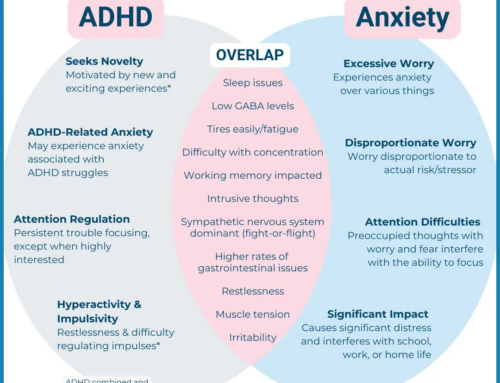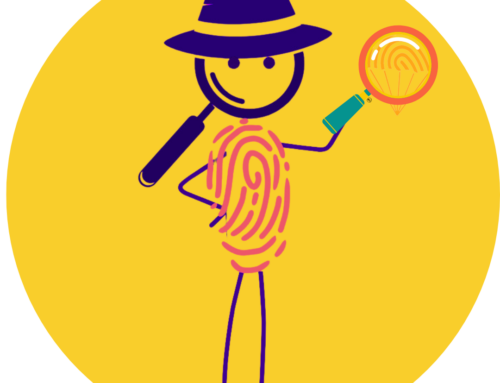What Is ADHD Masking?
“I appear very organized to the outside world, but only because I spend an immense amount of time and energy putting everything together.”
“My house is an embarrassing cluttered mess. I don’t let people come over. All of the pictures I take inside my home are carefully constructed and cropped to hide the clutter.”
“I hate being late, and I struggle mightily to get to events on time. If I see that I won’t be on time, I sometimes cancel going to an event altogether to avoid comments about my tardiness.”
This is ADHD masking, and a few examples of the painstaking efforts that ADDitude documented through interviews with readers.
The following information about ADHD masking has been compiled from articles written by ADDitude authors, WebMD articles, and Psych Central Resources.
A common ADHD coping reflex, ADHD masking is about avoiding the shame and stigma that ADHD symptoms create. (Masking isn’t exclusive to ADHD; it is closely related to neurodivergence.)
One reader who grew up with undiagnosed ADHD said: “Pretending to be ‘normal’ seemed the only way to survive.”
Why is this important to understand? Pretending to be normal has the opposite affect for ADHDers; this mindset actually interrupts thriving with ADHD and co-existing conditions.
“I feel I have to work 10 times harder than others to complete simple tasks. Not only that, but I have to do it in a way that isn’t noticeable, because I don’t want others to see me struggle and think that I am incapable. I know that I am capable and that I do a damn good job, but there is always the fear that someone will learn my not-so-secret secret.”
ADHD masking is also called camouflaging or impression management, as coined by Dr. Russell Barkley. It involves hiding symptoms or overcompensating for them and is used as a coping strategy by an estimated 1/3 of people with ADHD.
Harmful implications of ADHD Masking can be:
- Using so much energy to seem “fine” that you do not have enough left to function or enjoy life
- Hiding your feelings and denying yourself emotional support from friends and family
- Behaving as if you do not have ADHD and missing out on a diagnosis and treatment
Masking is not the same thing as managing ADHD; masking ADHD is different from integrating tools and strategies to help you cope with executive function difficulties.
It’s important to identify and change the types of ADHD masking that may be causing you stress or anxiety.
| Helpful masking effects | Harmful masking effects |
| punctuality by using tools like timers | excessive fatigue |
| social acceptance | bypassed support opportunities |
| less procrastination by adopting organizational strategies | barriers to diagnosis and treatment |
| fewer interpersonal mishaps | disconnect from your true identity |
What does ADHD masking look like?
If you’re working hard to mask ADHD symptoms, other people might not be able to tell. In fact, you might be unaware that some of your behaviors can be attributed to ADHD masking.
But there may be signs that you can spot:
- Staying Too Quiet
- Being Overly Careful
- Obsessive Checking
- Always Giving Expected Reactions – Regardless of How You Really Feel
- Always Putting Forward the ‘Fine’ Expression
- Being Overly Concerned About Cleaning
- Hiding Hyperactivity Through Calmness
- Being Unable to Relax Without Worrying
- Listening Carefully & Focusing Too Hard
- Excessive Write-up to Cope with Forgetting
- Obsession with Organizing Everything
- Choosing Organizing Over Doing the Task
- Bottling Up Intense Emotions
- Calling in Sick to Avoid Stressful Situations
- Being Irritable when Trying to Focus Hard
- Taking on Too Much Responsibility
- Developing Perfectionist Tendencies
- Constantly Overdoing Everything
- Hiding because of Shame and Guilt
- Always Trying to be in Control
- Suppressing Stimming Behaviors (wiggling your leg, tapping your pencil to concentrate)
- Copying or Mimicking Others
If you notice that you participate in these behaviors from time to time, it does not automatically mean you are masking ADHD. Looking at “why” you do them – to hide or compensate for a perpetual fear of feeling less than or found out by peers? – will prove a valuable step in your personal growth with ADHD.
What is important to know in the long run? Over time, masking can take a toll on your:
- Sleep
- Healthy eating habits
- Exercise
- Relaxation time
- Energy level for other life-tasks: you might feel burned out and start to ignore other things, like getting your taxes done on time, going to your doctor appointments, or keeping your home clean.
- Mental health. Other mental health conditions that are common with ADHD might also enter the picture. Masking can lead to anxiety or depression if you feel like you’re constantly under too much stress. If you mask strong emotional reactions and tell yourself that you’re not capable or normal, that can also drive depression and anxiety.
3 Hidden Consequences of ADHD Masking
Imposter Syndrome and Low Self-Esteem
ADHD masking is often tied to feelings of inadequacy. Many individuals who mask are the same ones who magnify their challenges and dismiss their victories. One reader’s experience with going above and beyond in the workplace to mask ADHD captures this tension:
“I’m often unable to set reasonable expectations of what I can deliver to my clients. So I frequently overpromise and end up doing a lot of extra work. On some level, I hope the extras please them so they don’t see how incompetent I really am.”
It’s all too common for these unrealistic expectations to join with low self-worth and create imposter syndrome in individuals with ADHD. Imposter syndrome not only increases daily levels of anxiety, but it also prevents individuals from enjoying their successes because they attribute them to ‘good luck’ rather than their hard-earned efforts. This experience sounds very similar having a fixed mindset, opposite from growth mindset, as described by Dr. Carol Dweck.
Perfectionism Tied to ADHD
Masking is also linked to perfectionistic behaviors. Overly sensitive to their own perceived faults, people who mask may also be hyper aware of those traits in others and even develop an intolerance for them. Perfectionism, combined with imposter syndrome, can also intensify rejection sensitivity dysphoria. If something isn’t perfect, then it can be seen as another failure, adding to a sense of personal worthlessness. Sometimes people can project their need for perfection on others, judging them harshly for mistakes.
“I’m obsessed with punctuality,” a reader said. “I have to be early for everything and build in time for unknowns because I spent so many of my early years being late to everything. You would think I’d be empathetic toward the chronically late, but tardiness has become something I now have little to no patience for in others. Someone else’s lateness feels like a personal attack on me.”
Distorted Sense of Self Tied to ADHD
Years of intention or unintentional masking can muddy one’s sense of self. Undiagnosed individuals may try to cover up what’s really going on for them or be disconnected from a cohesive sense of self. Those with a diagnosis may spend so much energy trying to blend in that they come to question their identity. They feel cut off from who they are under the mask.
“I got diagnosed at 34 and I have been subconsciously masking for so long that I’m still struggling to find out who I really am, years after my diagnosis,” a reader said. “The hardest part about masking is not being able to acknowledge all the things I really need help with, down to the absolute basics of life: keeping myself clean, feeding myself, even getting out of bed.”
What to Do About ADHD Masking
Unhealthy ADHD masking develops as a coping strategy to relieve uncomfortable feelings and may well be deeply embedded in how a person functions in their daily life.
Learning to unmask and share your genuine self with others can take some time, but it’s a worthwhile process that can improve the quality of your work, your social interactions, and your relationships.
“I gave up masking in front of my friends and family,” shared an ADDitude reader. “I find that I’m much happier, sleep better, and don’t feel as anxious.”
Five steps to begin the unmasking process – from ADDitude:
-
Consider all the ways you mask your ADHD and why. Awareness is key. What parts of yourself do you actively work to shield from view? Which of these would make you anxious if brought into the light? How do you try to keep up appearances? Many people overcompensate because their current strategies are not as helpful as they would like. Do you do this? Consider the ways that masking differs from healthy strategies you have in place to manage ADHD symptoms.
-
Think of healthier habits. If you weren’t masking, what else would you be doing? What obstacles or fears interfere with making different, genuine choices about your behaviors or responses? Would it be helpful for you to speak with someone to explore the habit of masking, brainstorm alternatives, and practice using them? Do you need to rethink your personal expectations or set boundaries at work or at home? Your needs – and potential solutions – will become apparent as you consider these questions, identify the ways you mask your ADHD, and break down the purpose of your masking.
-
Surround yourself with people who love and support you. Talk to your loved ones about ADHD, your specific needs, and how you like to be supported. Being yourself will come naturally when you’re around people who accept you for who you are. ADHD support groups are great places to share experiences and receive encouragement. As you start to unmask, be prepared for potentially negative reactions from others in your life who are not accustomed to the real you. Don’t let their reactions bring you down. Follow your own path to living fully with ADHD. This is where you will find your self-esteem and joy.
-
Practice self-compassion. Be kind to yourself. As ADHD coach Linda Roggli, PCC, notes: “Your masks have protected you in the past but release them with love.” Recite a few positive affirmations when negative thoughts come up. Or, talk back to that negative voice and treat it as you would a third grader with a skinned knee. That voice developed to keep you safe, but now you need to build a new strategy.
-
Bring in your sense of humor! Kami, an ADDitude reader from North Carolina said she used to mask her difficulty remembering people’s names. “It was really hard for me to ask someone to repeat their name,” she wrote. “I do my best to be courageous and, of course, blame my ADHD brain and laugh it off.”
Learning to laugh with ourselves, with our challenges, and with our successes will help reduce masking and increase self-esteem. Understanding the relationship between ADHD and Executive Function is a powerful place to start!
Do you have a question about Executive Function or ADHD Coaching? Connect with Jenny McKeand, Student and Parent Connector, today!
And if you’re an independent family who just needs a little boost, or you are looking to learn more about Executive Function Skills, we highly recommend our online learning platform www.thequantumjump.org. Create a free account to browse the courses for students, parents, teachers, and business professionals.
Yours in the Journey,
Cara







